Refacing your kitchen cabinets is an affordable and straightforward way to give your kitchen a fresh look while avoiding the complications of a full renovation. Below, we’ve compiled common questions and detailed answers about DIY kitchen cabinet refacing to help you confidently navigate the process. Whether you’re curious about the steps involved, the tools required, or the materials to use, this guide provides a practical overview to get you started.
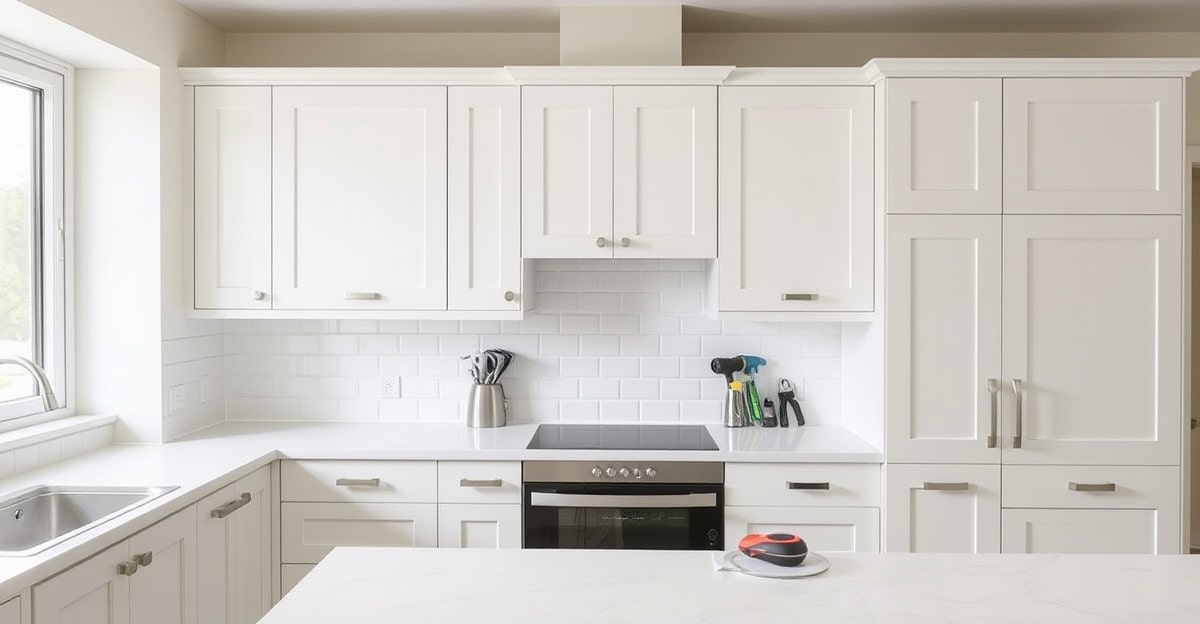
Planning and Preparation
What are the essential steps involved in refacing kitchen cabinets?
Refacing kitchen cabinets involves updating the cabinet’s facade while keeping the existing structure. First, remove the existing cabinet doors, drawer fronts, and all hardware. Clean and prepare the cabinet boxes for the new material by sanding and filling any imperfections, such as cracks, dents, or uneven surfaces, to ensure a smooth and durable finish. Next, cover the face frames and end panels with new materials like veneer or laminate. After that, install new doors and drawer fronts, taking precise measurements to ensure a proper fit. Use concealed hinges for a sleek look and attach new drawer fronts to the existing drawers. Finally, install new hardware like knobs and pulls to complement the updated cabinets. Add finishing touches such as cove moulding or a toe-kick cover.
Can I successfully reface my kitchen cabinets as a DIY project?
Yes, refacing kitchen cabinets can be a DIY project, but it requires attention to detail and experience working with tools. You should be comfortable with measuring, cutting, and installing materials accurately. Refacing cabinets involves multiple steps, including removing existing components, preparing surfaces, applying new materials, and installing new doors and hardware. If you lack experience or confidence in these tasks, it’s best to hire a professional for a quality finish.
How long does it typically take to reface kitchen cupboards?
Refacing kitchen cupboards yourself can take anywhere from a few days to a week, depending on the size of your kitchen, the complexity of the project, and your skill level. Professionally installed refacing typically takes about five to seven weeks, with only two to five days of work being done in your home.
What tools do I need for refacing cupboards?
You will need some basic tools to reface your kitchen cupboards. Some of the essential tools include:
– A 4-in-1 screwdriver
– A brad nail gun
– A caulk gun
– A circular saw
– A cordless drill
– A file
– Forstner drill bits
– A laminate slitter or table saw
– A mitre saw
– A paper cutter
– A veneer tool
You may need additional tools depending on the specific materials and techniques you choose for your refacing project.
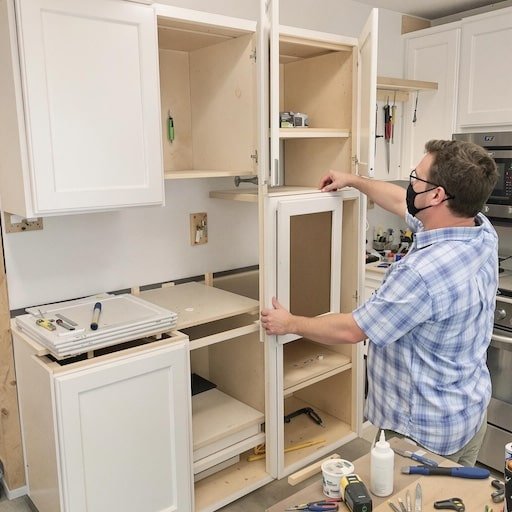
Budget and Cost
What is the most budget-friendly way to reface cabinets?
DIY is the most affordable method to reface kitchen cabinets. Opt for less expensive materials like laminate or wood veneer instead of solid wood. You can find affordable pre-finished options or save more by finishing the materials yourself. Avoid changing the cabinet layout or adding complex features to keep costs down.
Is it more cost-effective to reface existing cabinets or replace them entirely?
Refacing kitchen cabinets is generally more cost-effective than replacing them entirely. Refacing typically costs about one-third to one-half the price of replacing cabinets. This is because refacing reuses the existing cabinet boxes and only requires replacing the doors, drawer fronts, and hardware. You can save even more by doing the refacing yourself. However, if the existing cabinets are in poor condition or you want to change the kitchen’s layout, replacement may be a better option.
What is the approximate cost of refacing kitchen cabinets in Australia?
The cost of refacing kitchen cupboards in Australia can vary significantly depending on the size of your kitchen, the materials you choose, and whether you DIY or hire a professional. For a standard-sized kitchen with budget-friendly laminate refacing, you can expect to pay between $1,320 and $3,000. For a medium-sized kitchen using wood veneer, the cost can range from $3,500 to $6,000.
How much does it cost to reface kitchen cupboards in Australia?
Similar to the above, the cost depends on materials and labour. Laminates are on the lower end of the range, while wood veneers or professional installations push costs higher.
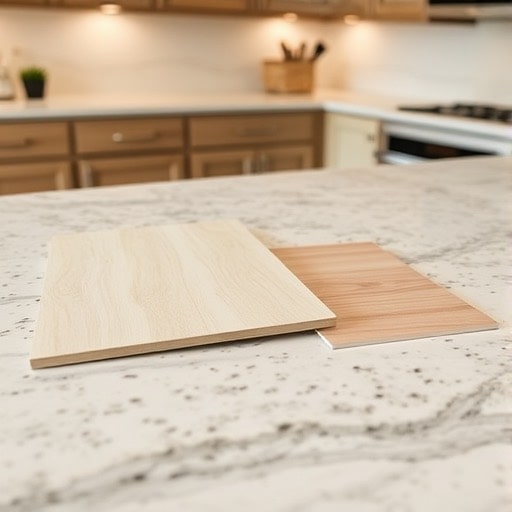
Materials and Techniques
Can MDF cabinets be refaced?
Yes, MDF cabinets can be refaced. MDF is a suitable material for cabinet refacing as long as the cabinets are in good condition, meaning they have structural integrity and are free from water damage or significant wear. It provides a smooth surface for veneer or laminate to adhere to. However, like any cabinet material, it’s crucial to ensure the MDF cabinets are structurally sound and free from significant damage before proceeding with the refacing process.
Can you paint laminate kitchen cupboards?
Yes, you can paint laminate kitchen cupboards to give them an updated look. However, you need to take extra care when prepping the surface. Laminate is a non-porous material, so you’ll need to lightly sand it with medium-grit sandpaper to create a surface for the primer to grip. It is also important to use a high-quality primer specifically designed for laminate surfaces.
What types of materials can be used for refacing cupboard doors?
You have several options for refacing cupboard doors, including:
Wood Veneer: Thin sheets of real wood that are glued to the cabinet surface. They can be stained or painted to match your kitchen décor.
Laminate: A durable and affordable material that comes in a wide variety of colours and patterns.
Thermofoil: A type of laminate that is permanently fused to a fibreboard core, creating a seamless and durable finish.
You can also paint existing cupboard doors if they are in good condition.
Can you reface cabinets with a different style of door?
Yes, you can reface cabinets with a different style of door. Refacing allows you to choose from a wide variety of door styles, including shaker, raised panel, slab, and glass doors. You can also add trim to the doors to change their appearance.
What type of hinges are recommended for cabinet refacing?
Concealed hinges, also known as European hinges, are recommended for refacing kitchen cabinets. They offer a clean look and improved functionality compared to traditional exposed hinges. Concealed hinges are adjustable, making it easier to align the doors for a professional finish.
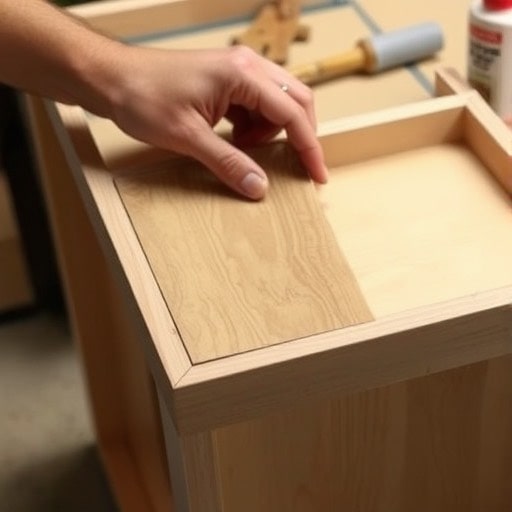
Design and Functionality
Can I change the colour of my cabinets when I reface them?
Yes, you can definitely change the colour of your cabinets when refacing them. You can choose from a wide range of colours for both paint and stain. If you are using wood veneer, you can stain it to match any colour you like.
Can you reface cabinets without removing the existing countertops?
Yes, refacing cabinets can be done without removing the countertops. This is a major advantage of refacing, as it saves time, money, and disruption during the renovation process. However, you need to make sure that your current countertops are in good condition and compatible with the new cabinet design.
Can I add extra features to my cabinets during the refacing process?
While refacing primarily focuses on updating the aesthetics of your cabinets, you can also incorporate some functional upgrades. You can add features like pull-out shelves, spice racks, or lazy susans to improve organisation and accessibility. These additions can be integrated during the refacing process to enhance the functionality of your kitchen.
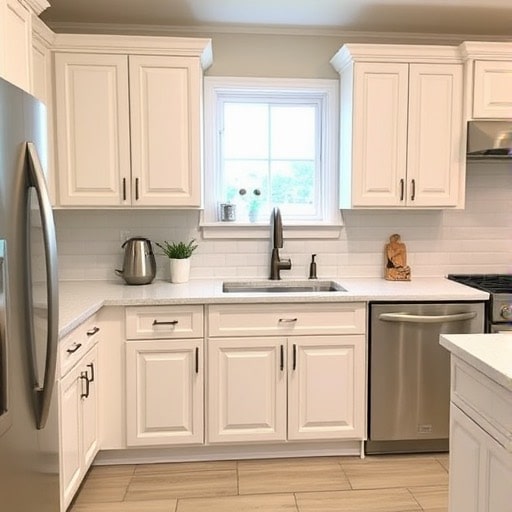
Environmental and Practical Considerations
Is cabinet refacing an eco-friendly option?
Yes, cabinet refacing is a more environmentally friendly option than cabinet replacement. Refacing minimizes waste by reusing the existing cabinet boxes instead of discarding them. This reduces the demand for new materials and helps conserve natural resources.
What are the benefits of refacing kitchen cabinets?
Refacing kitchen cabinets offers a number of benefits:
Cost Savings: Refacing is significantly less expensive than replacing cabinets.
Reduced Waste: Refacing reuses the existing cabinet boxes, reducing waste.
Faster Completion: Refacing typically takes less time than replacing cabinets.
Less Disruption: Refacing can be done without removing the countertops, minimizing disruption to your kitchen.
Customization Options: Refacing allows you to choose from a wide variety of styles, materials, and finishes.
What are the disadvantages of refacing cabinets?
However, there are limitations to cabinet refacing. You cannot change the layout of the cabinets with refacing, so if you desire a new configuration, refacing won’t work. The interiors of the cabinets also remain unchanged, so if you’re looking for improved functionality, you may need to consider replacement instead. Additionally, refacing may not be possible if the existing cabinets are in poor condition or made of unsuitable materials.
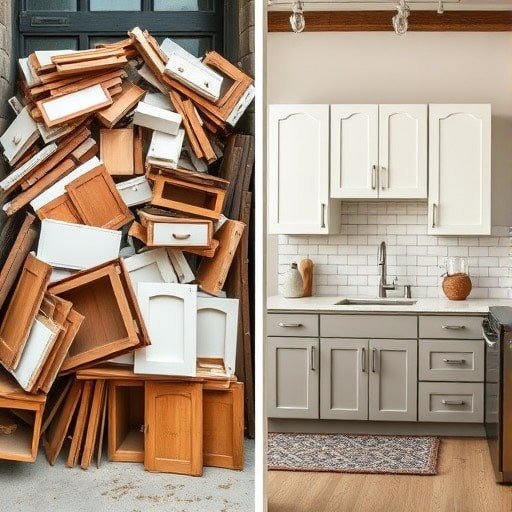
Alternatives and When to Replace
What’s the difference between cabinet refacing and cabinet replacement?
Cabinet refacing updates the look of your existing cabinets without changing the layout or structure. You keep the existing cabinet boxes and replace the doors, drawer fronts, and visible surfaces with new materials. Cabinet replacement, on the other hand, involves removing the old cabinets completely and installing brand new cabinets. Replacement gives you more design flexibility, but it is significantly more expensive and time-consuming.
What’s the most cost-effective way to give kitchen cabinets an updated look without refacing?
The least expensive way to update kitchen cabinets without refacing is by painting them. This simple change can dramatically improve the kitchen’s aesthetics. Choose high-quality paint that’s suitable for cabinets and prepare the surfaces properly for optimal results. Another budget-friendly option is replacing the hardware with new knobs and pulls.
When should I consider replacing my cabinets instead of refacing them?
While refacing is a cost-effective option for updating cabinets, there are situations where replacing your cabinets is a better choice. Consider replacing your cabinets if:
– The cabinet boxes are damaged, warped, or in poor condition.
– You want to change the layout of your kitchen.
– You need to increase storage space.
– The existing cabinets are made of particleboard and have been exposed to moisture.
– You want a completely new style and design that cannot be achieved through refacing.
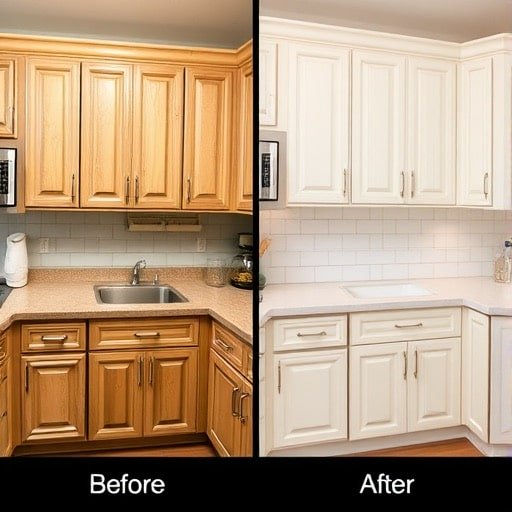
Post-Refacing Questions
What should I do with my old cupboard doors and drawer fronts after refacing?
You have a few options for your old cupboard doors and drawer fronts:
Recycle them: Check with your local recycling centre to see if they accept wood or laminate cabinet doors.
Upcycle them: Get creative and repurpose the old doors into something new, like a chalkboard, a shelf, or a decorative piece.
Donate them: Some charities or community organisations might accept old cabinet doors for reuse or repurposing.
Dispose of them responsibly: If you can’t recycle, upcycle, or donate them, dispose of them according to your local waste regulations.
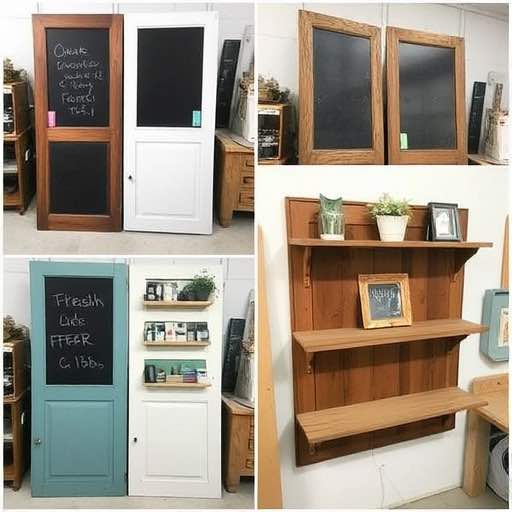
Key Takeaways for a Successful Cabinet Refacing Project
Refacing kitchen cabinets is a practical and budget-friendly way to transform your kitchen. By choosing the right materials, tools, and techniques, you can achieve a professional-looking finish that enhances your space. Whether you’re painting, applying veneers, or installing new hardware, the process allows for plenty of personalisation. If your cabinets are in good condition and you’re ready to take on a rewarding DIY project, refacing might be the perfect solution for your kitchen renovation needs.
